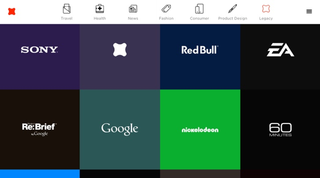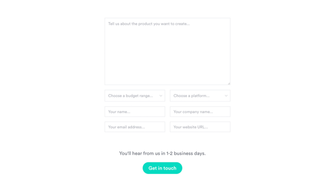3 things every portfolio must include to drive new business
Incorporate these tips to optimise your site for client acquisition.
We won’t be the first, or last, to tell you this: your portfolio site is important.
Having a strong portfolio site will help you demonstrate your design capabilities, show off your best work, and build an online presence for your personal brand. But for most designers, their portfolios become an afterthought — quickly slapped together in between client projects.
By taking the time to strategically plan out your site’s design, you’ll be able to transform your portfolio from a way to display your work into a full fledged lead generation machine.
Here are the three most important things you should do to ensure your portfolio site helps you drive new business.
01. Treat the design as you would any other client project

Too often we treat the design of our personal portfolio sites as an afterthought. When we’re juggling client projects and a personal life, it can be difficult to dedicate time to focus on the look and feel of our own sites.
But heed my warning: don’t underestimate the impact a well-designed portfolio site can have.
Think of it this way; When we apply for a job, we take the time to craft a personalized and professional-looking resume. This tells the hiring manager that we’re serious about the opportunity. As a designer, your resume is your portfolio site.
When a prospective client reviews your portfolio, they are evaluating your technical skill and the potential impact you might be able to bring their business. While most of this assessment will be based on your body of client work, prospect will also judge your capabilities on their experience interacting with your website.
First impressions matter in design. If your portfolio is poorly designed, slow to load, and riddled with grammatical errors, than your prospect is left to believe that your client work probably looks the same. By offering a cohesive browsing experience that is effortless and enjoyable for the user, you’ll diminish any concerns your prospects may have the moment they land on your portfolio.
02. Publish detailed case studies that focus on business results

Case studies are the meat behind a well constructed portfolio site. They act as the primary piece of content prospective clients will rely on to assess your skill as a potential consultant. But with so many portfolios following the same pattern, what can you do to make your case studies stand out?
The best design case studies are more than just a way to display your work. They are a useful medium that allows you to demonstrate the impact your work has had on your clients’ businesses — ultimately proving the value you bring to the table.
When writing your case studies, you should move beyond surface-level explanations and tell a complete narrative instead. Try to include details that establish the need for the project, showcase your design process, and - most importantly – highlight what the design accomplished for the client and their business.
By covering the business impact of your work, you’re building a case for the importance of your work and your effectiveness as a designer. Seeing the results you’ve obtained for other businesses should help alleviate any reservations a prospective client might have about hiring you.
But not everyone is going to read your case study in its entirety. Make sure to include a brief overview of the project that provides prospective clients with a quick, high-level understanding of your work and it’s impact – without forcing them to read the full thing.
03. Don’t overlook the power of your Contact page

Case studies and work samples are the central pillar of a great portfolio, but in our efforts to wow users with our previous design work we often overlook the importance of the rest of our site, like our Contact page.
In their most basic form, Contact pages consist of a lead capture form used to gather contact information from prospective clients. When designed purposefully, these forms can go beyond gathering simple details like emails and company names, and can be used to qualify your prospects before ever interacting with them.
Try to think of your Contact page as the starting point for your project brief. You should aim to gather enough details about your prospect’s budget, timeline, and requirements so that when you have your first interaction, you are equipped with a strong understanding of the project’s scope and whether or not it’s a fit.
Soliciting this information upfront will not only help avoid wasting hours on briefing meetings that don’t amount to anything, but will show your clients that you are serious about helping their business.
Take your portfolio to the next level
For most designers, your portfolio is the primary method of promoting your business so it makes sense to invest some extra tender, loving care into its creation. By taking the time to plan out your portfolio to feature stunning design, comprehensive case studies, and an effective contact page, you’ll be well equipped to wow clients and convince them to hire you for their next project.

Thank you for reading 5 articles this month* Join now for unlimited access
Enjoy your first month for just £1 / $1 / €1
*Read 5 free articles per month without a subscription

Join now for unlimited access
Try first month for just £1 / $1 / €1
Get the Creative Bloq Newsletter
Daily design news, reviews, how-tos and more, as picked by the editors.
